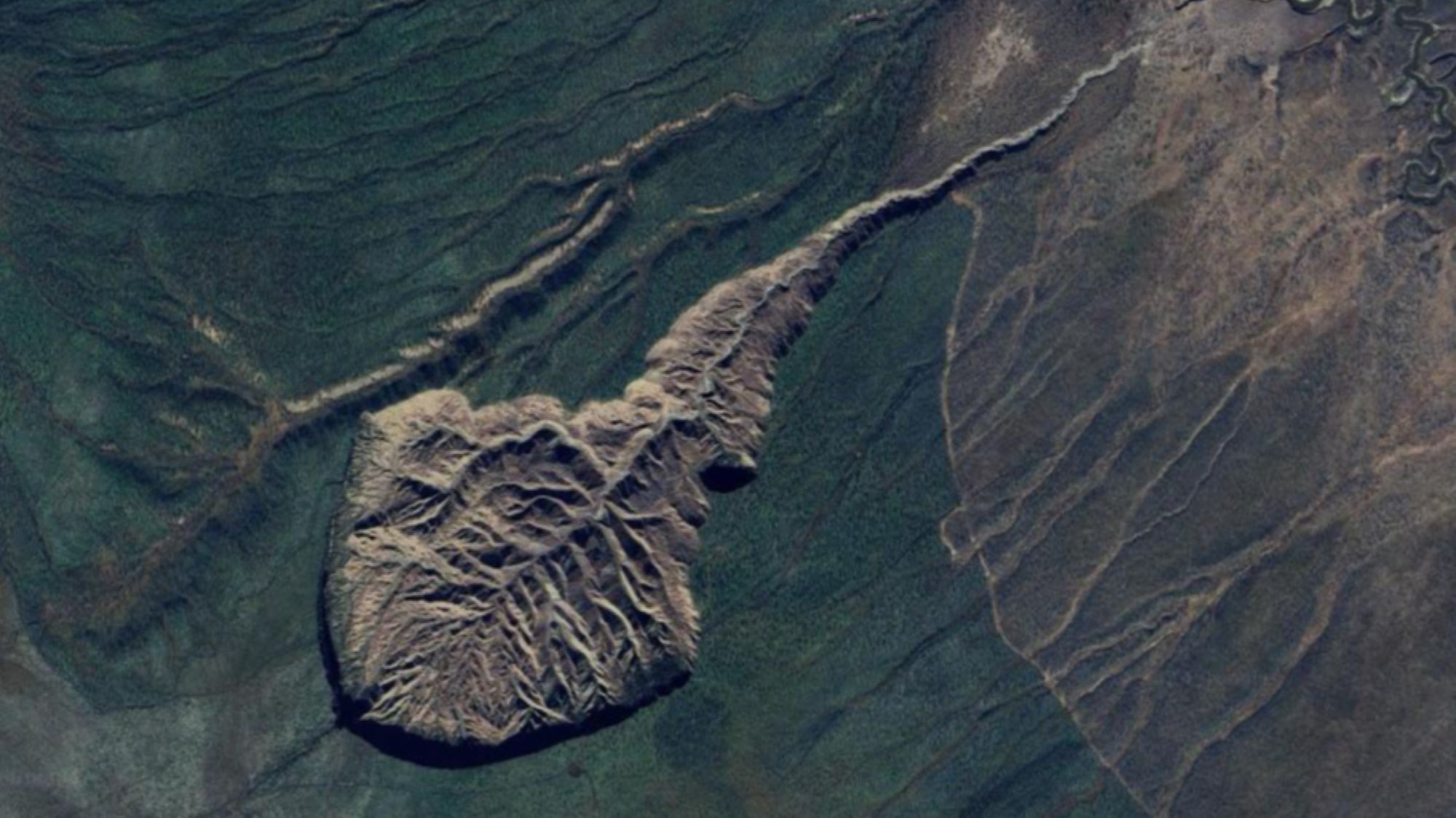
Name: Batagay crater or megaslump
Location: Sakha Republic, Russian Far East
Coordinates: 67.58025078697945, 134.77146778546097
Why it's incredible: The gateway exposes the oldest permafrost in Siberia at 650,000 years old.
The "gateway to the underworld" is a colossal, expanding crater in Siberia's permafrost. It is officially called the Batagay (also spelled Batagaika) crater or megaslump and formed when a portion of hillside in the Yana Uplands collapsed in the 1970s. However, the crater wasn't discovered until 1991, when satellite images revealed a rounded cliff face towering over a huge depression in the frigid landscape.
The Batagay crater is the largest megaslump in the world, measuring 3,250 feet (990 meters) wide as of 2023. The cliff face at the top of the formation, or headwall, stands 180 feet (55 m) high.
Related: Methane 'kitchens' in Siberia's permafrost form mounds that can erupt, creating giant craters
When it opened, the gateway exposed layers of permafrost that had been frozen for up to 650,000 years — the oldest permafrost in Siberia and the second-oldest in the world, after relict ground ice in Canada's Yukon Territory that is about 740,000 years old. Recently, researchers found that the gateway is expanding annually by about 35 million cubic feet (1 million cubic meters), with the depression sinking further into the ground and exposing new layers of ancient permafrost.
The headwall of the gateway is also retreating at a rate of 40 feet (12 m) per year due to permafrost thaw, discharging massive amounts of ice and sediment into the crater, according to a 2024 study. Some of this melt material may remain in the crater, but sediment and ice also washes into the Batagay River valley at the far end of the gateway, researchers noted in the study.
The permafrost in this region is 80% ice, which is likely why the hillside slumped in the first place, Thomas Opel, a paleoclimatologist at the Alfred Wegener Institute in Germany who has studied the gateway to the underworld, previously told Live Science.
The gateway sits in a landscape of larch and birch woodlands that became the target of deforestation from the 1940s onward. Deforestation caused the topsoil to rapidly erode and expose the underlying permafrost, which — due to its icy composition — melted more quickly than if it had been richer in sediments. Significant melting during the following decades caused the hillside to disintegrate and collapse, Opel said.
Frozen soils exposed along the gateway's headwall are helping researchers piece together past climates. There are very few ancient permafrost layers in Siberia that are accessible for scientists, so the Batagay megaslump is an important laboratory for paleoclimate research teams, Opel said.
The gateway also offers scientists a glimpse into ancient animal and plant life. For example, in 2018, researchers found an intact, 42,000-year-old Pleistocene horse (Equus caballus lenensis) foal sticking out of the megaslump's headwall. Older permafrost layers may not contain such well-preserved specimens, Opel said, but there's probably ancient DNA to be found.
"There is certainly more to come," Opel said.
Discover more incredible places, where we highlight the fantastic history and science behind some of the most dramatic landscapes on Earth.







